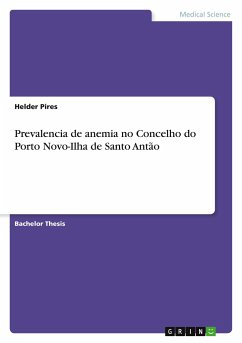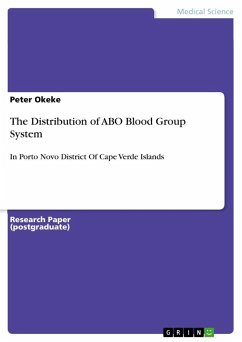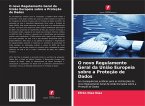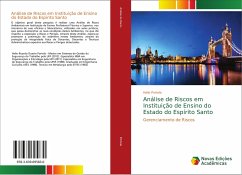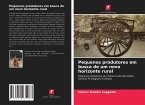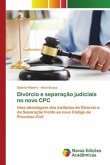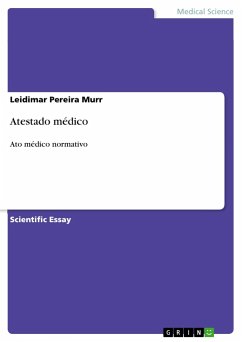Bachelor Thesis from the year 2011 in the subject Medicine - Other, Reitoria da Universidade de Cabo Verde , course: Bacharelato Biologia Marinha e Pescas, language: Portugues, abstract: Anaemia is defined as a patologic process in which the hemoglobin concentration, present on the red blood cells is normally low, concerning the variations according to age, sex and altitude in relation to the sea level, in consequence of many situations as chronic infections, hereditary blood problems, lack of one of the essential nutrients, necessary in the formation of the hemoglobin, as folic acid, vitamin B12, B6 e C and proteins. According to the OMS estimation, on the developing countries the iron deficiency anaemia affects close to 36% of the population, as long as on the developed countries its occurrence remains round 8%. Amongst the nutritional anaemias , iron deficiency anaemia is the most common, followed by megaloblastica anaemia , caused by , vitamin B12 or folic acid deficiency, that are essential for erythropoiesis. The present work had as the prime objective, analyse the prevalence of anaemia in Porto Novo, Santo Antão Island, besides describe the prevalence of anaemia according to sex, age and red blood cell morphology.In this study, a total of 473 blood samples collected in EDTA, routine anticoaguta were analysed, using the haematologic automatic counter SYSMEX KX-21N, between May and July 2010. The classification of anaemias was realized, according to the reference values determined by OMS to hemoglobin counting, so also the values of reference to MCV was established with support on researched bibliography and that of local reference values.The results indicated that, in the whole samples, 159 was male and 321 was female, in what, 41,01% (n=194) has presented anaemia, as long as 58,99 %(n=279) has presented normality. This was more prevalente on female, where we observed that 27,48% of women where anaemic. In pregnant the prevalence was 8,88%. The normocitic anaemia was the most prevalent (52, 06%), followed by microcitic (45,36%) and macrocitic (2,58%). statistically , was not observed diferences between male and female in occurrence for anaemia, while, in the studied age groups,was found significative statistic differences. It has observed that the age group with more cases of anaemia is situated in 1-40 years. It has seen, the prevalence of anaemia in the study was high and it has inverse relationship with age. Keywords: prevalence; anaemia; iron-deficiency; nutritional anaemias.
Hinweis: Dieser Artikel kann nur an eine deutsche Lieferadresse ausgeliefert werden.
Hinweis: Dieser Artikel kann nur an eine deutsche Lieferadresse ausgeliefert werden.

